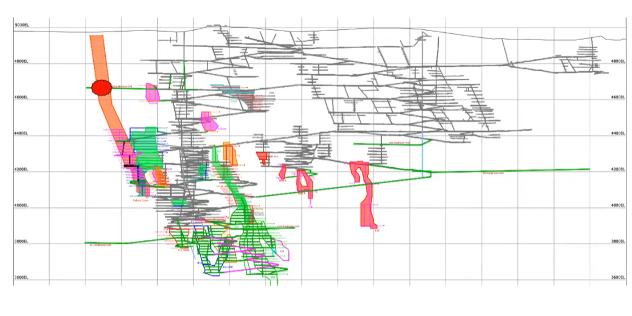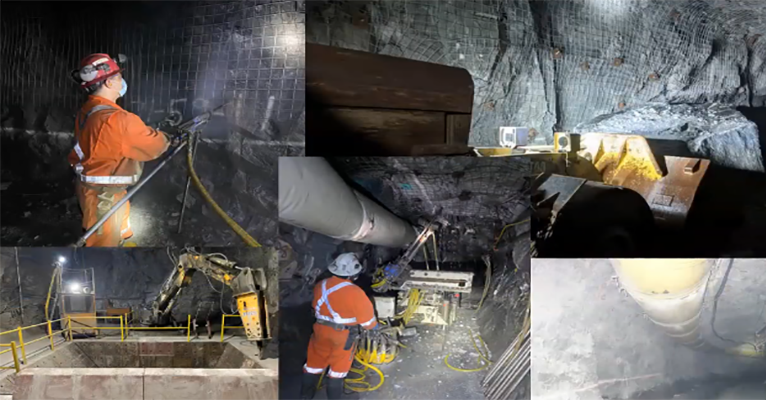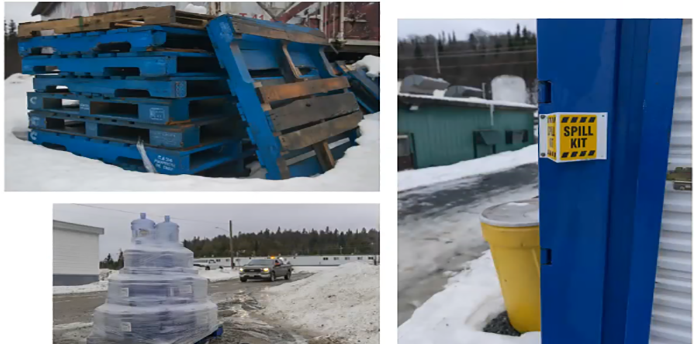05 April at 07:00AM
Managing Projects in Mining: Get the Buy-In & Understand the Outcomes

What is the key to having a successful project? First, you need to know and understand the outcome the project is aiming to achieve. But is that all? While it’s a start to know what the end goal is, it’s also pertinent to know the various impacts on the key performance indicators. This includes know the internal and external constraints, possible risks, and change requirements to adapt the plan. The Northern Community hosted an informative session on how mining projects differ from other industry projects. Guest speaker, Mark Frayne discussed these important characteristics and how as project managers, we all share a common goal. We all want to see the successful executions of our projects.
Meet Our Guest Speaker
 Mark Frayne the presenter for the day is an accomplished geological engineer and is the Asset Management and Reliability Manager of Western Gold Mines. He’s the president of the Ontario Society of Professional Engineers and has been a PMP since 2012. Mark has had the opportunity to build three mines now; the first was in 2000. With 22 years of experience in building and operating mines, in North America, Mark emphasizes that getting his PMP not only helped him to organize his projects, but it also helped in doing everything in life.
Mark Frayne the presenter for the day is an accomplished geological engineer and is the Asset Management and Reliability Manager of Western Gold Mines. He’s the president of the Ontario Society of Professional Engineers and has been a PMP since 2012. Mark has had the opportunity to build three mines now; the first was in 2000. With 22 years of experience in building and operating mines, in North America, Mark emphasizes that getting his PMP not only helped him to organize his projects, but it also helped in doing everything in life.
What Is A Project In Mining?
A project’s beginning is just as important as its end. Even before a mining project begins, there’s a closure plan put in place. There are regulatory issues that needs to be put forward and understood by the government and the communities that the project will impact. The biggest hurdle in mining projects is obtaining the permits. This takes the longest time and runs the greatest risk.
It’s necessary to consult with communities who are impacted whether detrimentally or beneficially, and engaged right at the start of the project. Why? There are considerable unknowns throughout the project and it’s beneficial to have all stakeholders understand possible unknowns.
Mark identified some of the key differences of the project charter between mining projects and other industries.
| Traditional Project Charter | Mining Project Charter |
|
• Problem Statement & Objectives • Deliverables & OUTCOME • Measure of Success • In & Out of Scope • Assumptions & Constraints • Project Sponsor, Manager, & Team • Schedule / Milestones • Financial Analysis & Budget • Key Stakeholders • Key Risks • Authorization Sign-Off |
• Consultation & Planning Roster • Sustainability Measures • Environment Disturbances / Impacts • Social & Community Engagement • Governance • Regulatory Requirements
• Acknowledgement Sign-off |
Traditional Project Charter vs. Mining Project Charter
The Project Charter is a key tool for every PM. It evolves as the unknowns are uncovered. Traditionally, the project charter begins at the start of the project and is focused on the outcome. Scope, budget, and schedule also are the tools that measures the outcome.
In some situations, the outcomes can change. What is considered as a requirement at the start of the project may not be needed at the end of the project. So, it’s important to modify outcomes.
In a mining charter, Mark highly recommends understanding all the possible outcomes at the beginning of a project, otherwise the project is guaranteed to be derailed.
Consultation & Planning Roster
The PM is responsible for figuring out every aspect of the mining project. For instance, the maintenance, finance, procurement, and impact on the environment. The PM must understand the impact of the project on all the key stakeholders. It’s necessary to get the buy-in and inputs from all stakeholder groups.
Every year, Ernst and Young identifies the top 10 risks in the mining industry and in 2022 they identified Environmental, Social and Governance (ESG) as the top risk. ESG deals with sustainability.
Regulatory Requirements
There are over 50 different Acts and regulations that impact mining projects.
Acknowledgement Sign-Off
It’s not just that authorization is required to proceed. The PM must consulted with all internal stakeholders so that there is a state of operational readiness.
What Is the Project Aspect that’s Missed the Most?
It seems that one step that can’t be missed is the buy-in from the stakeholders. If overlooked, this can cause great risk to the project’s outcome. Mark indicates that acceptance by Stakeholders, both external and internal, is crucial to project success.
Community engagement is key. But what’s the biggest unknown? From the technical point of view, the biggest unknown is geology.
Examining the Life of a Mine

Geology, interpretation, and models are used to identify the life of a mine. From the visual, the red zones mark where there are drifts being developed. Exploration goes deeper, wider, and bigger meaning that there’s tons that will be produced and identified but the place for the waste rock and the tailings could take years. So, projects are continuous.
Getting to the Ore
After the ore is found, the team gets near them instead of mining into them. Once the bodies are found and the value in the lower ore bodies are identified, the mining method is chosen. The mining method is dictated by how big it is, whether it’s tall and narrow or wide and narrow. Every type of ore body has a particular mining method that can access the value.

This is a picture of some of the mining activities happening underground in Jack Lake. The scoop cram is being operated on remote. The cable bolting drill is drilling in and adding ground support making the drift safer. It’s important to always carry the infrastructure along such as ventilation, communications, power, water, compressed air, and dirty water lines.
There are a few different methods used to tunnel in mining.
Alimak Mining Method
The Alimak mining method basically drives a vertical tunnel in the middle of the ore body. Then it is drilled off and blasted from the bottom. The material is mucked from the bottom. Approximately 10% of the tonnage at this point is recognized with this method. The main reason for this method is that it might be too costly for mineral being recovered.
Vertical Sill Retreat
The Vertical Sill Retreat is a long ore body. The development is done at the bottom of the ore body and at the top as well. Then it’s drilled off and the sections are blasted, leaving a pillar. This area is then mined out and backfilled with waste rocks that don’t have to be brought up to the surface. 40% of the tonnage is produced this way.
Sub-Level Mining
The Sub-Level Mining is the most effective method because it allows for more flexibility and surgical removal of ore. 50% of tonnage is produced by this method.
The Environmental Impact
It is important to be excellent at waste management in mining project. Identify the waste streams and make sure that there are systems in place to manage the waste streams, divert the waste, or even make the waste into revenue streams. An example of this would be in Sudbury, where in the past they would let sulfuric acid into the sky causing pollution. These days the sulfuric acid is captured and sold to industries that need it.
Some of the biggest waste is the rock dust, which is called tailings. The tailings management area is systematically built and contained. The water that’s impacted is treated. Constructions are carried out over the tailings area every year.
These constructions create burns or dams that there are impermeable. They act as monitoring cell and, tilt meters and ensures that the problems that mining industry has is avoided.
Maintaining a small footprint around the mine is key. Go through different evaluations to make sure that there is a forward looking through process, the risks aren’t too high and money isn’t unnecessarily wasted. It takes five years to have a new tailings facility. Substantial environmental baselines and consultations are required.
Going outside the tailings means dealing with effluent management. All this water can’t be released into the environment. It’s taken back to the mill and recirculated. The remaining water is settled outside and treated in a reverse osmosis treatment plant.
The entire system is a closed-circuit system. If the last point of discharge at the treatment plant shows that the quality isn’t up to the grade as per the permit, then it’s redirected to the tailings pond, and it doesn’t go into the environment.
On the other hand, if the water is too pure it’s not good for the fish to survive. So, it’s discharged onto a man-made limestone brook before reaching its destination. This ensures the calcium and other minerals that’s required to support aquatic life is retained.
Hazardous Waste Storage
Diesel mines produce lots of oil lubricant. Even electric mines have spent batteries. There are certain secondary industries that can make use of these batteries for another purpose. Mining projects are also big on recycling. A mining company has been experimenting to see if the rock flour can be used as a fertilizer supplement. The good news is that the first year the yield was great, and it improved the next 2 to 4 years because the minerals in the rock flour are breaking down and enriching the soil even further.

What Is the Reason for Most Projects?
The reason for projects is the ability to continuously improve the process and sustaining it. The rock is going to behave differently and has a different stress level. So it is important to be instrumented enough and have the right ground support. Some good examples are the underground ventilation improvement, electrical sub station, circuit upgrades and new bunk homes. The industry is progressing, and the operations are improving to change the entire world.
Conclusion
After listening to Mark’s description of mining projects, I realized that everything can be treated like a project. Being able to look for opportunities, jumping into them and launching them is the way to go!
Follow our News




